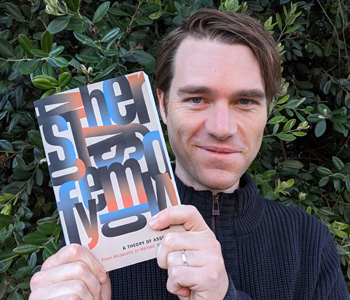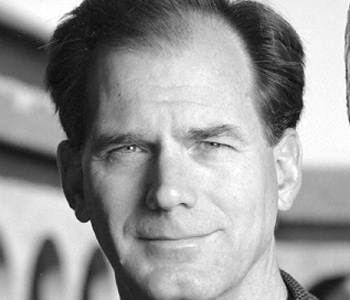Travis,Trysh
The Language of the Heart: A Cultural History of the Recovery Movement from Alcoholics Anonymous to Oprah Winfrey
University of North Carolina Press
376 pages, 9 x 6 inches
ISBN 978 0807833193
My book is about that loosely defined cultural phenomenon known as “the recovery movement”—an agglomeration of self-help groups and practices that have grown out of Alcoholics Anonymous since its founding in 1935. Although most people know someone who is or has been “in recovery,” most people are also a little vague about what that means. That vagueness has allowed critics—both conservative and progressive—to caricature the recovery movement as narcissistic, banal, and apolitical. The Language of the Heart is intended to show that recovery is a diverse and evolving phenomenon whose complex history reflects the shifting ideas about gender and power that characterize contemporary America.
I’ve used recovery’s print culture to narrate the story of its evolution from AA—which began as an alcohol-focused, evangelical Christian, and resolutely masculine sub-culture—to Oprah Winfrey, a self-proclaimed “food addict” and survivor of childhood sexual abuse who espouses a healing metaphysical spirituality to millions of women around the globe. Most recovery publications come from the margins of polite print culture. Rather than the products of professionally credentialed authors writing in the pages of esteemed journals, many of recovery’s central ideas appeared first in obscure pamphlets, self-published tracts, and the textbooks of the addiction treatment industry. None of these are usually considered “serious” literature. But both the writing and the reading of such materials is an extremely serious matter for many recovering people.

Recovery is a diverse and evolving phenomenon whose complex history reflects the shifting ideas about gender and power that characterize contemporary America.
Two phenomena led me to this project. A number of people close to me are recovering addicts of one sort or another, and when I attended meetings with them I noticed that books featured prominently in their meetings. Alcoholics Anonymous, written by one of AA’s co-founders and usually called “the Big Book,” was the most prominent. But people also carried with them daily devotional readers published by AA, Al-Anon (the organization for friends and families of alcoholics), and treatment centers like Hazelden.
That’s not something you often see in depictions of AA or NA (Narcotics Anonymous) in film or on TV; there, a 12-Step meeting is only about people talking. But in the meetings I attended people often referred to their books as they talked, highlighted and annotated passages that mattered to them, and engaged in long debates over what a passage or a phrase might mean. As a literature teacher, these are habits I try to inculcate in my students (not usually with much success), and I wanted to find out how and why people in recovery were so intense about their reading.
At the same time that I was thinking about reading within 12-Step groups, I started to notice an increasing number of popular novels aimed at women that seemed to offer some version of recovery’s central ideas. Powerlessness, forgiveness, the importance of self-love and of “keeping it simple”; these were all values that I was hearing espoused in meetings, and they were also popping up in mid-list fiction—not only Oprah books, but “serious” titles like Michael Cunningham’s The Hours and bestsellers like Rebecca Wells’s Divine Secrets of the Ya-Ya Sisterhood. This made me curious about how recovery ideas had migrated out of the church basements where meetings were held and into the popular imagination.
There’s a lot at stake in that migration, I think. When a person goes to AA, declares, “I am powerless over alcohol,” and reads daily from the Big Book to get instructions on how to live so as to remain sober, she has made a conscious decision to adopt a set of mental habits—a worldview, if you want to call it that—because she wants to change her life. Few people sit down with a novel thinking, “I want to get some lessons in how to change my life from this book.” But the novels I was seeing had a powerful didactic streak. Through traditional sentimental plots involving mothers and children, they were urging readers not so much to quit using alcohol or drugs (though a few of them made that case in passing), but to quit demanding satisfaction from contemporary consumer capitalist American society, to admit they were powerless over their own lives.
There’s something very Zen in such an admission, and that spiritual equilibrium is what many people in recovery are striving for. At the same time, as a feminist, I just couldn’t get comfortable with powerlessness and “acceptance” as the paths to happiness for women in the aggregate. When taken out of the context of the individual pursuit of sobriety, recovery ideas seemed profoundly non-liberatory. This puzzled me: how and why did these ideas move from one context to another, and what was it about that changed context that gave them such a different valence? To answer those questions, I decided to write the book that became The Language of the Heart. Fortunately, as I wrote I got the opportunity to revise this fairly simple binary into a much more complex and multi-faceted picture.
I’ve got two of these. The first is on pages 16-17, where I talk about what this book is not. Unlike most of the writings on the topic, The Language of the Heart is neither “for” nor “against” recovery, and it’s important that people know that going in. Twelve-step groups like AA may work well for some people but not for others. The broader culture of recovery is in some ways insipid, banal, and politically reactionary, and in other ways profound, exciting, and progressive. Like any complex cultural phenomenon, recovery can’t be easily boiled down to a “good” or a “bad” thing, and people who come to the book expecting such blanket praise or condemnation will be disappointed.
The second thing I hope a browsing reader would come across is the series of images on pages 89-91. These show the iconic figure that people in AA refer to as “the man on the bed,” the de-toxing drunkard being visited by sober AAs and encouraged to try their program of recovery. The first image is a staged photograph that accompanied the 1941 Saturday Evening Post article that first brought AA national attention; the second is an illustration for an article in the AA magazine The Grapevine. That illustration was translated into stained glass by AA members in Akron, Ohio in 2001, and the final image is of their work, which hangs in the Akron AA archives.
This triptych of images is important to me for two reasons. The image of “the man on the bed” exemplifies both the vulnerability (represented by the man on the bed himself) and the mutuality (represented by the AAs who have come to offer him help) that together form the heart of 12-Step recovery. Mid-twentieth-century straight white masculinity did not value either of those traits particularly highly, and AA’s most radical feature may be its injunction to its members (about 66% of whom are men) to give up the habits of “domination and dependence” that have shaped their lives and their drinking. The man on the bed is poised to renounce those habits or to slip back into them, and so his image appears frequently in AA’s material culture. on sobriety medallions, bookmarks, murals, etc. That AAs continue to re-imagine the man on the bed in new media suggests that even as the organization has grown into a global phenomenon of millions of members, its radical potential— the possibility that individual men might transform their lives by embracing relationships of compassion, rather than competition—remains alive.
Second, these images testify to the enormous help I received from recovering people while I was putting this book together. Few of my primary sources reside in standard repositories like libraries, museums, or professionally-maintained archives; instead, they came from private collections, offbeat literature dealers, and the archives maintained by recovering people interested in their own history. Their generosity in sharing these materials with me has been one of the greatest rewards of my research, and it is emblematized in these photos.

That AAs continue to re-imagine the man on the bed in new media suggests that even as the organization has grown into a global phenomenon of millions of members, its radical potential— the possibility that individual men might transform their lives by embracing relationships of compassion, rather than competition—remains alive.
One of the things I’ve become most aware of while working on this book is the degree to which cultural critics inside and outside of the academy write about phenomena that reflect and reinforce their own tastes and worldviews. There’s a lot of writing out there about addiction, because addiction, despite its tragic dimension, retains a sheen of cool. Drug and alcohol use and abuse are dis-inhibiting; they de-stabilize social norms. Without too much effort, we can see them as heroic challenges to the staid routines of our uptight bourgeois lives.
Recovery culture, by contrast, is really square, both as aesthetics and as politics. One of the amateur authors I talk about drew inspiration from Lawrence Welk in many of his writings, for crying out loud—and not in an ironic way! It’s this squareness, I think, that has led critics to overlook the complexity of recovery—its existence as a cultural formation with a genuine intellectual and social history that both reflects and helps to construct the larger economic, political, and psychic realities around it.
Personally, I would rather listen to hip-hop than to Lawrence Welk, and prefer reading high modernism to the personal stories in the Big Book. But that doesn’t mean that the culture of people whose tastes don’t run to transgressive or ironic texts is transparent or not worthy of scrutiny. Neither belletristic nor academic critics of the popular expend much energy on square cultures, however, except to occasionally talk about how awful they are. I wonder what other cultural formations besides recovery scholars of popular culture have simplified or overlooked in recent years simply because they don’t give us aesthetic or intellectual pleasure.




We don't put paywalls. We don't distract you with ads. We don't sell your data.
Please help to keep this running!